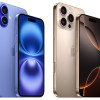SnapKeys Developing 'Keyless Keyboard' for Mobile Devices
Sep 16, 2010, 10:36 AM by Eric M. Zeman
A company called SnapKeys is pitching its "keyless keyboard" system to mobile device and computer makers, reports Reuters. SnapKeys' software makes use of four invisible keys, each of which holds 6 or 7 letters. Two keys are placed on either side of a device's display. The are other keys dedicated to punctuation. SnapKeys uses predictive software in conjunction with the invisible keys to guess at what people are attempting to type. Right now, it says its technology is 92% accurate in English with a dictionary of about 100,000 words. To start, the letters will overlay the device's display when typing, but SnapKeys believes that users will eventually learn which letters are on each of the four keys and can turn off the overlay. SnapKeys believes its technology allows for much faster text entry on devices that lack physical keyboards. "There is a fundamental problem in entering data on mobile devices," SnapKeys Chief Executive Benjamin Ghassabian told Reuters in an interview. "Keyboards were meant for fixed devices, not mobile. And screens are not supposed to be your input device; they are supposed to be output." Many of today's smartphones are touch-based and include software keyboards that appear on the display for text entry. SnapKeys said it is working with Philips, which is making the required hardware, and is in talks to sign deals with mobile device makers.
Comments
Worthless
Multi-function buttons overloaded with possible inputs are the bane of user friendly interfaces.
His intended market can't possibly be the high end smartphone market It sounds more like a cost cutting measure to reduce physical keys on low tier devices and replace with cheaper software.
I hate this idea and it just sounds CHEAP!
Consumers are familiar with qwerty keyboards both virtual and hardware and will always go with what they are comfortable with
again this is simply a cheap shot at reducing manufacturing cost by replacing hardware keyboards and touch screens with cheap software.


 Samsung Refreshes Galaxy S Series with S Pen, New Cameras
Samsung Refreshes Galaxy S Series with S Pen, New Cameras
 Samsung Refines its Foldable Phones
Samsung Refines its Foldable Phones
 iPhone 14 Plus Offers a Big Screen For Less
iPhone 14 Plus Offers a Big Screen For Less
 Snapdragon 8 Gen 2 Redefines AI in Flagship Phones
Snapdragon 8 Gen 2 Redefines AI in Flagship Phones
 iPhone 16 Brings More Features to All Price Points, Including New Camera Control
iPhone 16 Brings More Features to All Price Points, Including New Camera Control

